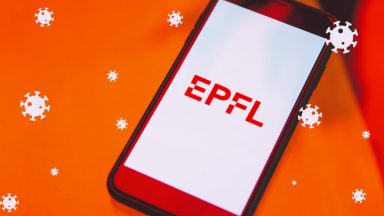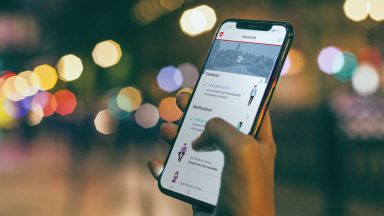This page has been created to inform you about the steps and gestures to put in place in the event of a confirmed positive case or suspected case for yourself or a member of your unit.
Close contact means spending more than 15 minutes less than 1.5 m away from someone, without wearing a mask.
If you meet one or more of the following criteria:
- You have symptoms that could be indicative of the disease according to the FOPH.
- You have been in close contact with someone who has tested positive.
As a reminder, close contact means spending more than 15 minute less than 1.5 m away from someone, without wearing a mask. - You have recently been in a country or area with a high risk of infection as defined by the FOPH.
- You have been instructed to self-isolate by the public-health authorities.
Then please take the following steps:
- Don’t come to campus to work or study.
- Inform your supervisor.
- Stay at home and comply strictly with the health and safety guidelines.
- If you decide to see your doctor, call the doctor’s office first.
Staff members must enter their absence into the absence manager using the
following code: “Specific events (HR) – quarantine COVID-19.”
If you have been tested for COVID-19 but do not yet have the results, stay at home.
You can start putting together a list of people you were in close contact * with in the days preceding your test or before you began showing symptoms.
Staff members must enter their absence into the absence manager using the
following code: “Specific events (HR) – quarantine COVID-19.”
* Close contact means spending more than 15 minutes less than 1.5 m away from someone, without wearing a mask.
If you test positive for COVID-19, you will be informed by the public-health authorities in your home canton by either a phone call or text message. Here’s what to do :
- Comply strictly with the public-health authorities’ instructions.
- Stay at home and do not come to campus to work or study.
- The letter you receive from the public-health authorities will serve as your medical certificate, whether you’re a student or staff member.
- Reply to the public-health contact tracing survey.
- While you’re waiting for the public-health authorities’ instructions, notify everyone you were in close contact with in the 48 hours before your test or before you began showing symptoms.
The public-health authorities will carry out a contact tracing survey and ask anyone who was in close contact * with you to self-isolate. This process could take longer than usual due to the high number of new cases, so we suggest you begin contacting people yourself.
Staff members who test positive must enter their absence in the absence manager under “illness or doctor visit” starting on their first day off work.
* Close contact means spending more than 15 minutes less than 1.5 m away from someone, without wearing a mask.
Anyone in your unit who thinks they might have COVID-19 should refer to the section “If you think you might have COVID-19“. No other special measures are needed as long as that person does not test positive.
Anyone in a unit who has tested positive for COVID-19 (see section “What should you do if you test positive for COVID-19?“) will contact everyone they were in close contact * with. These people must then follow the instructions in section “If you think you might have COVID-19“. The attendance list kept by the units will be used to identify people who may have been in close contact with the person who tested positive (such as over lunch).
If the health and safety measures have been complied with, it is unlikely that people who were not in close contact with a person who tested positive were infected themselves. However, these people:
- should pay close attention to their own health
- can keep working, but remotely if possible
- should avoid all non-essential contact with other people
- must always comply with the health and safety guidelines.
In accordance with the Federal Act on Data Protection and the Federal Epidemics Act, there’s no need to notify the DSPS if you think you may have COVID-19 or if you test positive. Moreover, these guidelines are designed to protect the privacy of members of the EPFL community.
Unit heads must ensure that staff members have correctly entered their absences into the absence manager (in accordance with section “If you think you might have COVID-19“, “What should you do while awaiting the results of your COVID-19 test?” and “What should you do if you test positive for COVID-19?“).
* Close contact means spending more than 15 minutes less than 1.5 m away from someone, without wearing a mask.
The EPFL testing center is open, by appointment only, to the entire university community as well as residents of surrounding areas. As soon as you start showing symptoms of COVID-19, don’t wait – get tested right away! Tests are by appointment only, and free of charge if you meet the Swiss Federal Office of Public Health’s criteria.
- Anyone (staff members, students, guests, visitors, non-EPFL people, etc.) who has traveled to a country with an increased risk of infection according to the FOPH is prohibited from coming to any of EPFL’s sites and must strictly comply with the Swiss government’s quarantine requirements.
- For more information : https://www.bag.admin.ch/bag/en/home.html.
Support and links
For additional information about the symptoms of the disease, the situation in Switzerland and abroad, as well as for the emasures taken by the federal council, we advise you to consult the website of the Federal Office of Public Health (FOPH).
It is also possible to call the Coronivirs Info-line of the FOPH: +41 58 463 00 00 (every day from 6am to 11pm).
The Canton of Vaud also has a telephone hotline for the population and for travelers. More information on the Canton’s website.

EPFL Coronavirus Support
Didn’t find the information you were looking for on the site? Submit a new request.

COVID apps
Discover several apps to break the transmission chains of the SARS-CoV-2.